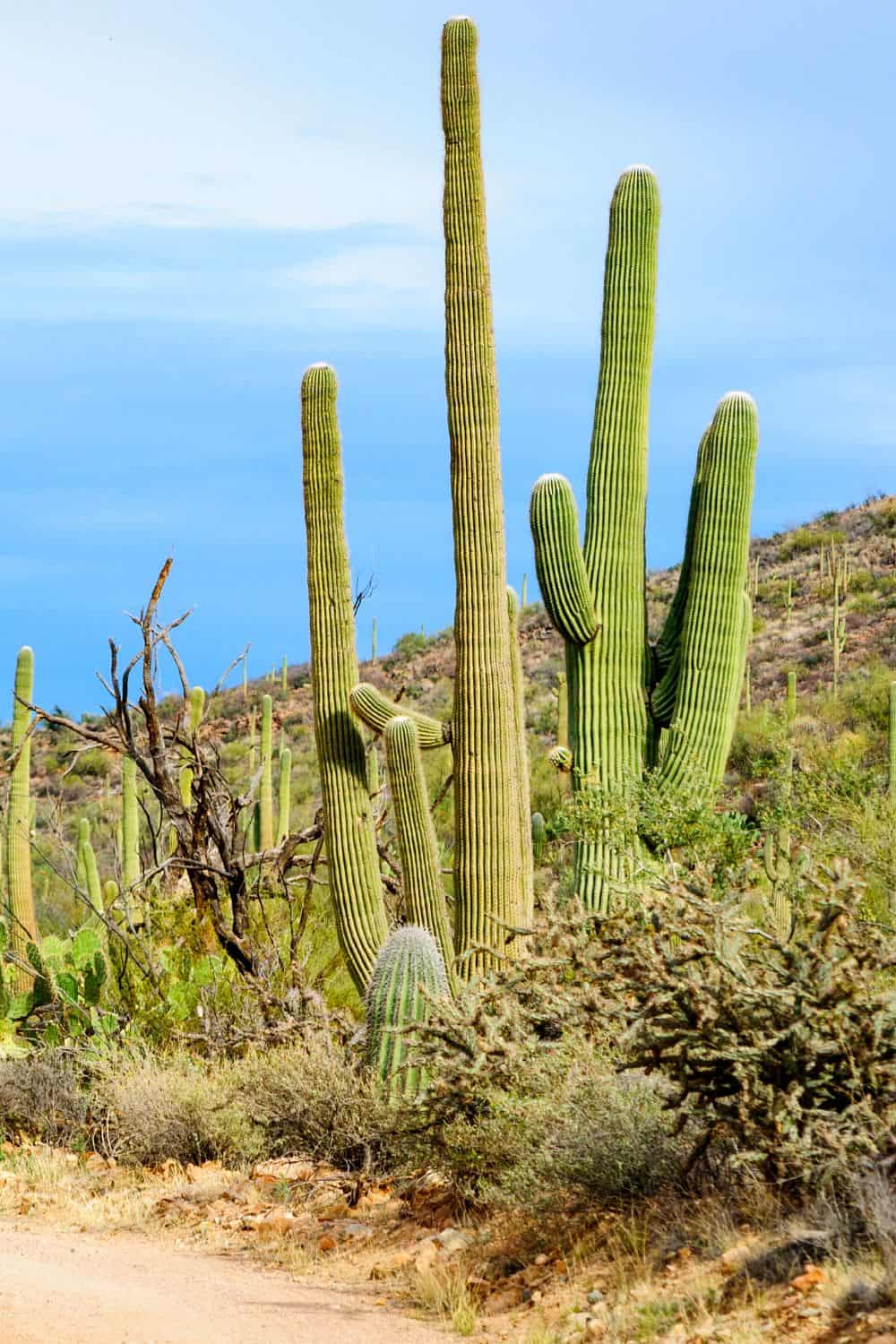
Saguaro National Park is located in southern Arizona, and is home to one of the most iconic symbols of the American Southwest: the saguaro cactus. While the saguaro is certainly the most recognizable plant in the park, there are actually many different types of flora to be found here, ranging from tiny wildflowers to towering cottonwood trees.
The saguaro cactus is a defining characteristic of the Sonoran Desert, and is found throughout Saguaro National Park. These cacti can grow to be over 40 feet tall, and can live for over 150 years. They are slow-growing, with the typical saguaro taking up to 10 years to reach a height of just 1 inch. It can take up to 75 years for a saguaro to grow its first arm, and some saguaros never grow arms at all.
The saguaro cactus is also an important part of the ecosystem in Saguaro National Park. Its flowers provide nectar for bats and birds, and its fruit is an important food source for a variety of animals, including desert tortoises and javelinas.
In addition to the saguaro cactus, there are many other types of cacti to be found in Saguaro National Park. The cholla cactus, with its barbed spines and colorful flowers, is another iconic plant of the desert Southwest. The prickly pear cactus, with its flat pads and spiny fruit, is also common in the park.
Saguaro National Park is also home to a wide variety of wildflowers, which bloom throughout the year. In the spring, the park is awash in color as lupines, poppies, and desert marigolds bloom. In the summer, the park is home to a variety of cacti and succulents, which bloom in shades of pink, yellow, and orange.
The park’s flora is not limited to cacti and wildflowers, however. There are also many trees to be found here, including the towering cottonwood, which can grow up to 100 feet tall. The mesquite tree, with its twisted, gnarled branches, is also common in the park. These trees provide shade and habitat for a variety of wildlife, including birds, insects, and small mammals.
Despite the harsh conditions of the Sonoran Desert, there is a surprising amount of diversity in the flora of Saguaro National Park. From towering cacti to delicate wildflowers, the park is home to a wide range of plant life. Visitors to the park can explore this unique ecosystem on foot or by car, and experience the beauty and diversity of the desert Southwest.
In addition to being beautiful and diverse, the flora of Saguaro National Park is also important from an ecological perspective. The park’s plants provide habitat and food for a wide range of animals, including everything from tiny insects to large mammals like bighorn sheep and mountain lions. The plants also play an important role in the water cycle, helping to prevent erosion and capture rainfall.
The flora of Saguaro National Park is also under threat from a number of different factors. Climate change is causing temperatures to rise and rainfall to become more unpredictable, which can have a negative impact on the park’s plants. Invasive species, such as the buffelgrass and the tamarisk, are also a threat to the park’s native plants. These invasive species can outcompete native plants for resources, and can alter the park’s ecosystem in ways that are difficult to predict.
To protect the park’s flora, the National Park Service is working to manage invasive species and restore damaged ecosystems. The park’s staff also conduct research to better understand the ecology of the Sonoran Desert, and to identify
Related posts:
If you love outdoor adventures, then Saguaro National Park will be one of your top destinations. Located in southern Arizona, Saguaro is famous for its spectacular scenery. The main attractions of this park are the Tumacacori Gumball Surprise, the Gi...
Saguaro National Park is located in southern Arizona and is home to one of the most iconic symbols of the American Southwest - the towering saguaro cactus. The park is divided into two districts - the Tucson Mountain District and the Rincon...